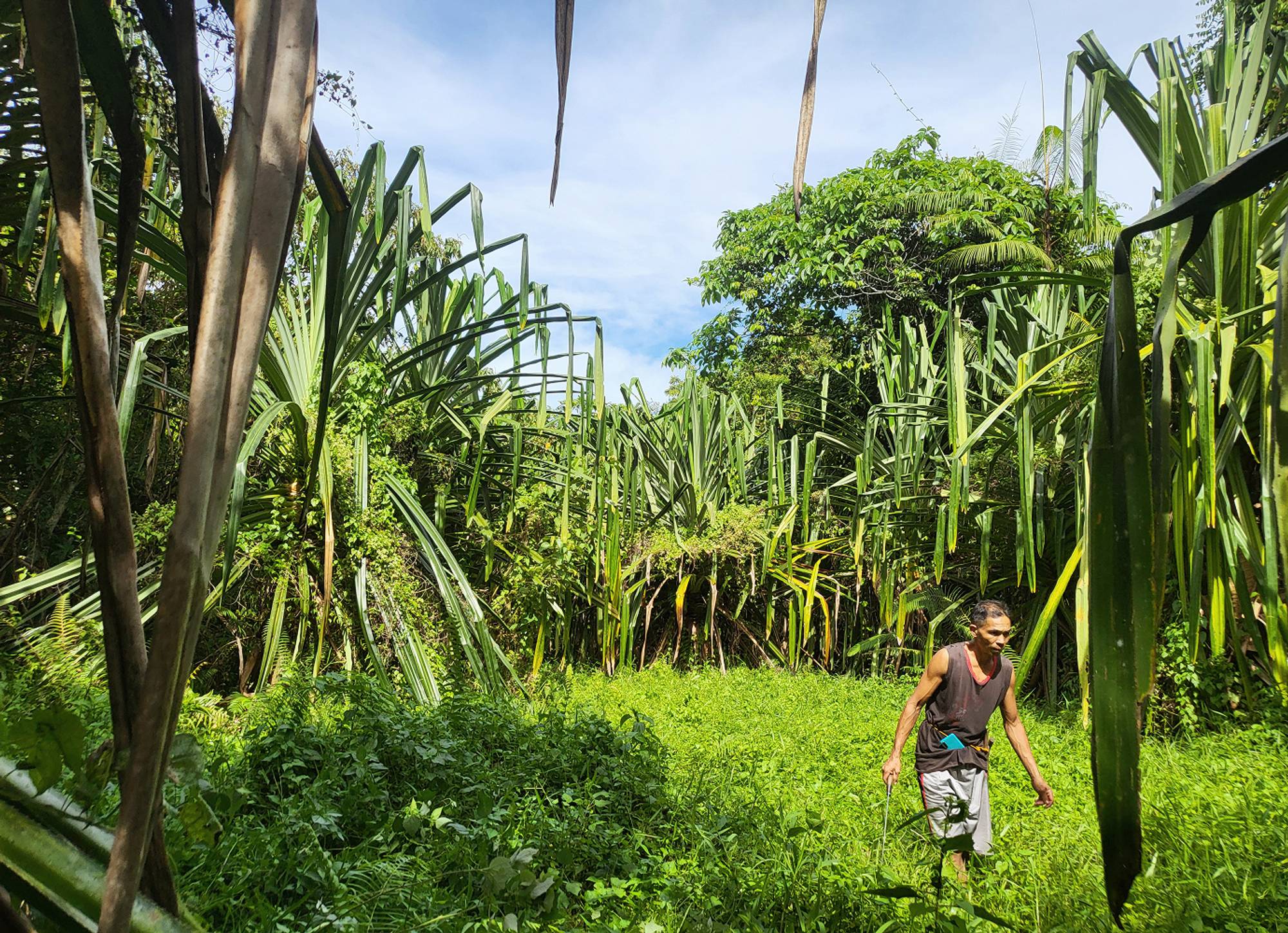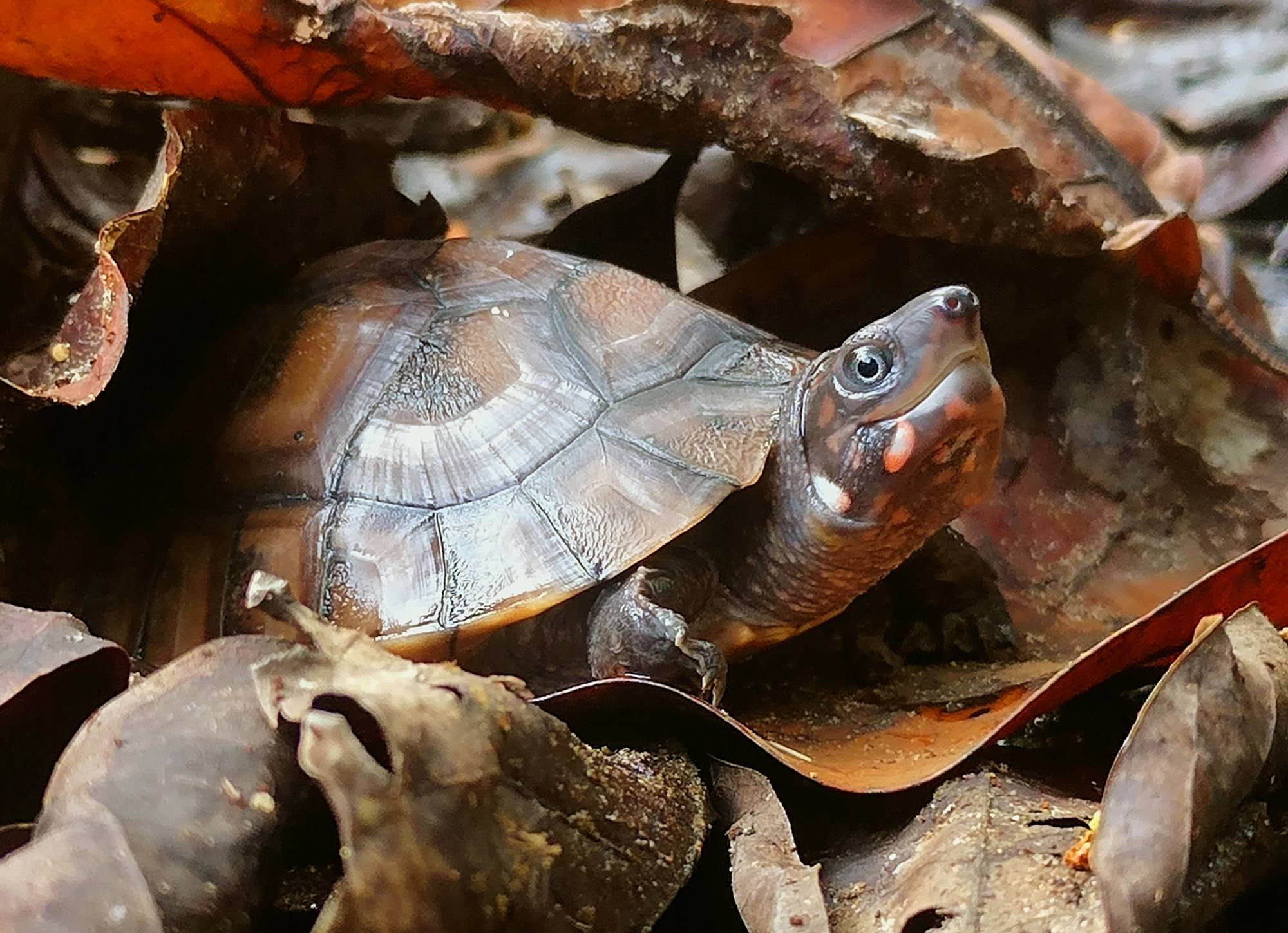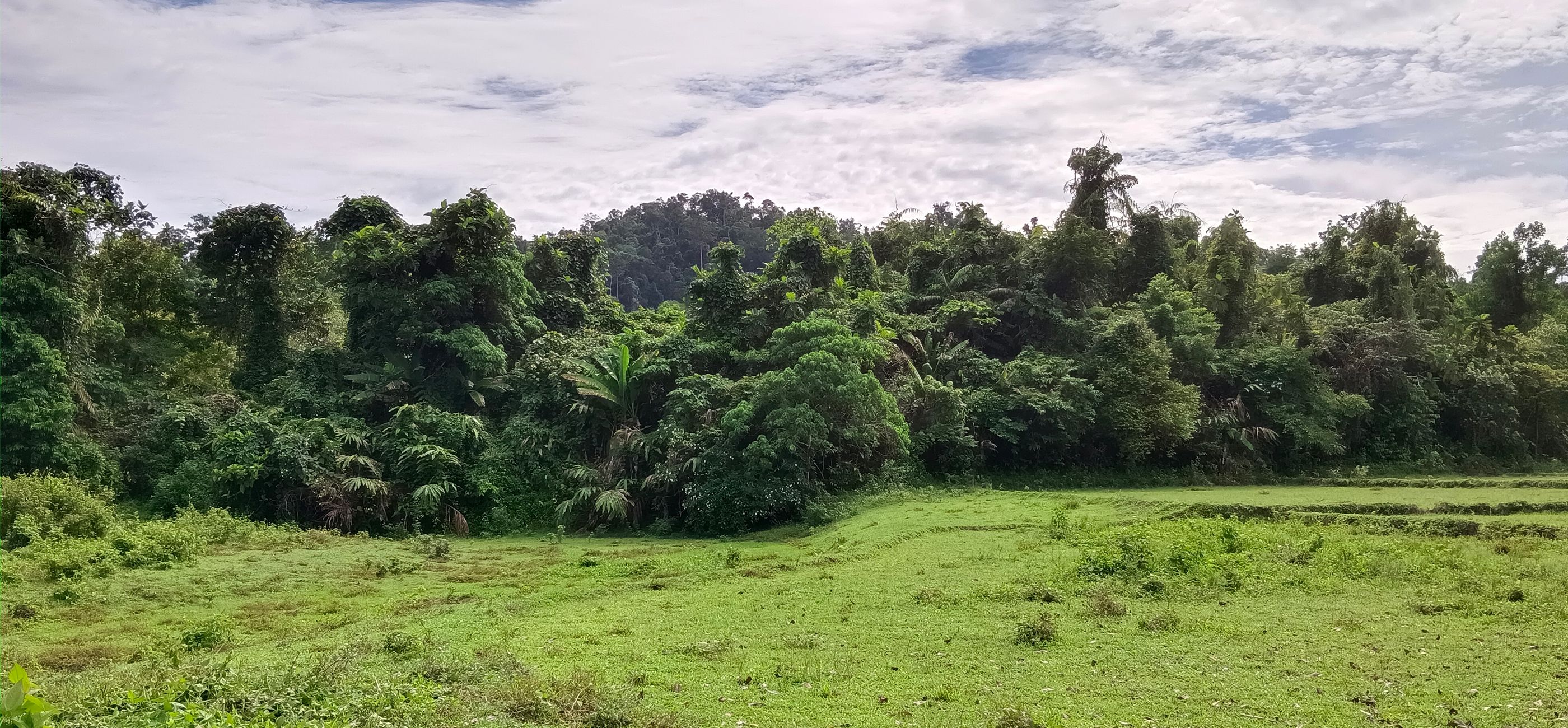
Palawan Forest Turtle
STATUS
Ongoing / Partner Program
Region
Philippines
Protected Species
Palawan Forest Turtle
Siebenrockiella leytensis
Critically Endangered
Amboina box turtle
Cuora amboinensis
Endangered
About the Program
The Turtle Conservancy supports German biologist Sabine Schoppe of the Katala Foundation Inc. (KFI). She is working with the Endangered Palawan Forest Turtle (Siebenrockiella leytensis), only recently rediscovered in the wild and restricted to a very small natural range in remote southern Philippines. The Palawan Forest Turtle depends on a specific habitat: streams in lowland peat swamp forest. For more than 80 years, its true geographic distribution in the Philippines remained a mystery—until a chance discovery of one specimen in a Palawan market in the late 1980s, and then the rediscovery of wild populations in 2004.
To support infrastructures of Katala Foundation, land management, and community projects
Fundraising Goal: $50,000
To support operation of the breeding facility
Donate Now
Unfortunately, that rediscovery of the Palawan Forest Turtle spurred a collecting frenzy to supply illegal wildlife trade for pets and food, culminating in the 2015 confiscation of 4,124 turtles in a single warehouse. Among them, 3,907 turtles represented a large portion of the estimated total adult population of the species. Though the species is legally protected under Philippine law, a lack of habitat reserves and parks protecting the species has facilitated the illegal trapping of the Palawan Forest Turtle for the blackmarket pet trade, traditional medicine, and food. Also, almost all lowland swamp forest has been logged and converted into rice paddy fields, with little peat swamp forest remaining intact in Palawan.

Local releasing turtles

Habitat of the turtles in Palawan - 1,890 acres of tropical rainforest are protected by Katala Foundation, the Turtle Conservancy and other partners

A young Palawan Forest Turtle (Siebenrockiella leytensis)
How we protect the species
In 2018, the TC and partners helped secure 1,890 acres for the protection of the Palawan Forest Turtle in the Philippines. This effort is being led by the Katala Foundation, Inc., with support from the Turtle Conservancy, Rainforest Trust, and Global Wildlife Conservation. The local government of Mendoza—with help from the municipal government of Roxas, Palawan—designated this acreage as a protected watershed, thus creating a wildlife protection area that will directly benefit this turtle. An additional 23 acres of land was purchased to prevent further agricultural development and restore its original, riverside rainforest habitat.
The formal establishment of protected areas covering varioussites where remnant populations of Palawan Forest Turtles survive was a major step forward for the species. Active support from the local community to protect their native forest and the wildlife inhabiting it bodes well for the future of the turtles.
By preventing the conversion of this vital habitat to rice paddy fields and monitoring it to prevent the illegal collection of the species, this reserve will be a critical part of protecting the Palawan Forest Turtle. This conservation site is also a habitat—and will provide a vital refuge—for endangered Palawan pangolins, currently the most trafficked mammal in the world. Moreover, peat swamp forests are one of the largest terrestrial carbon sinks, an important component to combating climate change.
Another large component of the Turtle Conservancy’s project is the management of confiscated animals. In June 2015, 3,831 critically endangered Palawan Forest Turtles were confiscated from a smuggling ring on the island of Palawan in the Philippines. The turtles were poached and were en route to pet markets in China, Hong Kong, Japan, and possibly Europe. Our team flew to Palawan to help with the international rescue effort and proudly announced that most of the turtles were able to be released.
The Katala Foundation is monitoring release sites to assess how the turtles are surviving. Daily, multiple wildlife officers survey sites to monitor the turtles, with the program also working on improving the living conditions of the local community, while training them in nature conservation.














